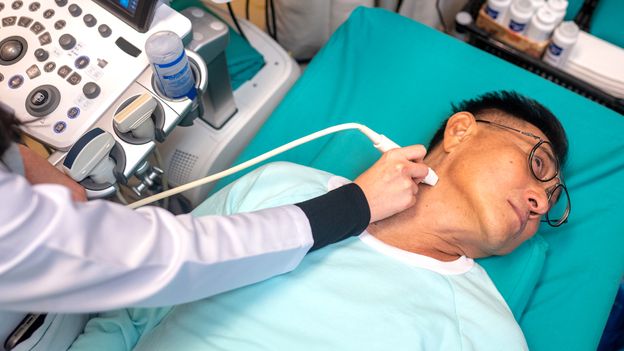What’s more, as thyroid cancers have increasingly been diagnosed at earlier stages, and treatment outcomes have improved, Vigneri says you would expect the number of people dying from thyroid cancer to fall. However, the death rate has remained stable at around 0.5 cases per 100,000 inhabitants, and there are signs that, at least in some countries, rates are increasing.
 Getty ImagesSome researchers believe the increase in procedures with higher levels of ionising radiation such as CT scans could be contributing to the rise in rates (Credit: Getty Images)
Getty ImagesSome researchers believe the increase in procedures with higher levels of ionising radiation such as CT scans could be contributing to the rise in rates (Credit: Getty Images)
For instance, one study analysed more than 69,000 thyroid cancer patients diagnosed between 2000 to 2017 in California. The researchers found that both the number of people diagnosed, and the mortality rate increased over the time period. The increase was irrespective of tumour size and stage of the cancer, suggesting that there must be something else at play rather than simply improved diagnosis of extremely small tumours.
In 2017, Kitahara and her team also examined the medical records of over 77,000 thyroid cancer patients diagnosed between 1974-2013. The results showed that, while most of the increase in cases was driven by small papillary tumours localised to the thyroid gland, there was also an increase in metastatic papillary cancers that had spread to other parts of the body. While deaths from thyroid cancer are rare, the study also showed these were increasing at a rate of 1.1% per year.
“This suggested that there could be something else that could be driving the increase in these more aggressive tumours,” says Kitahara.


